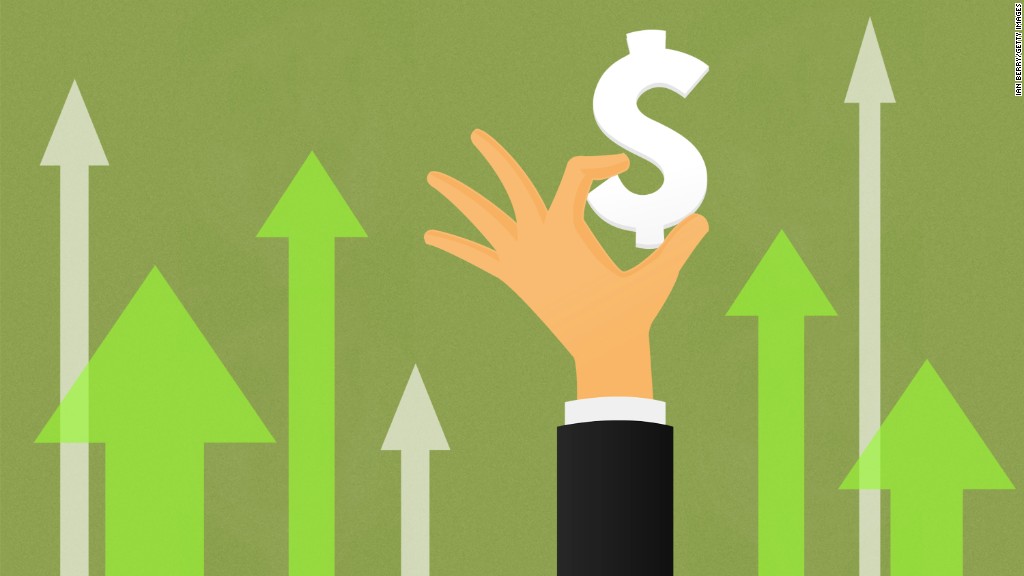
Americans on Friday will get one last glimpse at a key segment of the U.S. economy before next week's U.S. election.
The Labor Department publishes the October jobs report at 8:30 a.m. ET. It's arguably the most important measure of the economy's health. The report includes job growth, wages, hours worked, and quality of jobs created, among other items.
Here's are four things to know:
1. American economy is good, but not great
The U.S. economy has recovered a lot since the Great Recession ended in 2009. The unemployment rate today is around 5%, half of the painful 10% rate it had hit in late 2009, when the country was hemorrhaging jobs. Since then, the economy has created 13.7 million jobs.
However, it has been a long and slow slog to dig out of the recession.
And lately, even job growth has slowed. It's expected, since the economy is at the point that many economists consider fully employed. It's hard to keep adding loads of jobs forever. Last year, America added 2.6 million jobs, one of the best years of gains since 1999.
For October, economists surveyed by CNNMoney forecast that 177,000 new jobs were added, slightly higher than 156,000 jobs that were added in September. They also see the unemployment rate falling a tick to 4.9% from 5%.
To keep the unemployment rate where it is now, economists estimate that America only needs to add 50,000 to 100,000 jobs a month. So October's gains should be healthy enough.
2. Trump says the jobs numbers are bogus
Trump has consistently tried to discredit the official jobs numbers published by the Bureau of Labor Statistics, a wing of the Labor Department.
"The 5% [unemployment] figure is one the biggest hoaxes in American modern politics," Trump proclaimed in August.
Trump's team also likes to say the "overall unemployment rate" is 9.7%, not 5%. But what he cites is a different, broader measure of employment than what the Labor Department reports.
That measure, called the "U6 rate," has never been used to describe the country's overall unemployment rate and economists say it is misleading to characterize it as such.
A letter signed by 370 economists from around the nation this week urged voters not to vote for Trump and their first reason was that Trump has tried to discredit the country's fundamental institutions like the Labor Department.
Related: No Fed rate hike but one may come soon
3. Wage growth is picking up slowly
Americans' paychecks were one of the last things to turn in the right direction since the Great Recession.
Wage growth has been sluggish -- in the last four years, average wage growth was just above 2%.
Wages are expected to grow 2.6% in October, according to CNNMoney's survey, and so far this year wages have growth at an average of 2.5%. That's not huge, but it's better than what it has been.
Remember, as unemployment stays low, employers looking to hire have fewer available workers to choose from and are forced to offer competitive wages to recruit or retain employees.
Related: Truck drivers see best wage growth in October
4. People are jumping back into the job market
People who were laid off and disappeared from the labor force because they were disheartened about not finding one, are now coming back to give job searches another try. It's a positive shift.
Since the recession, there has been a high level of what economists call "discouraged workers." The participation rate, a key measure of whether people are coming back into the job market, has inched up this year. It's increased significantly for Americans between ages 25 and 54 years old -- the people who are generally supposed to be working.
The pick up in "working age" participation shows people feel more confident about finding work.
Related: Millions in gig economy can't find better work or pay
5. We've come a long way since the Great Recession but there's still plenty of problems
No doubt, the economy, especially the job market is in much better shape since the recession. America has added jobs for 72 consecutive months -- six years of gains.
But let's be real. Wage growth is still too low for too many Americans. Six million Americans work part-time jobs but want full-time work. And these part-time jobs can really hold people back and harm their careers.
Many workers, particularly in manufacturing and mining, feel left out of the recovery, as America's job creation has shifted towards services and away from production.


